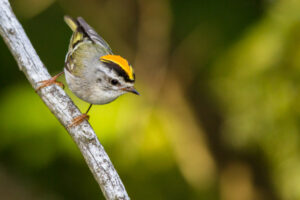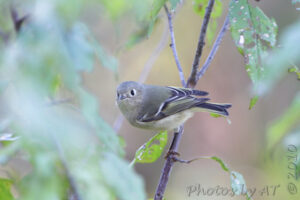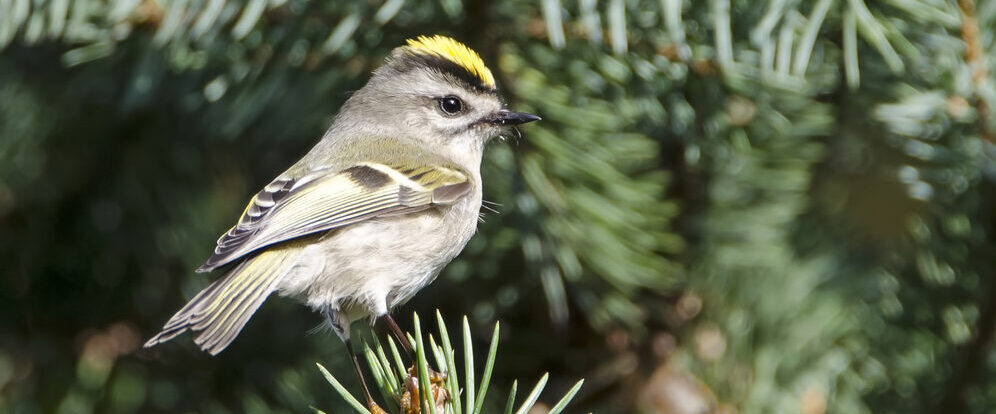Golden-crowned Kinglet, Regulus satrapa
Bill Rowe
All over the northern hemisphere, there are little birds like this one; ours are called “kinglets” while the Old World species are called “goldcrests” and “firecrests.” Most of them tend to breed in coniferous forest but are found more widely in migration and winter, and all of them are generally the tiniest of birds wherever they occur, with the exception of the hummingbirds in North America. The English name “kinglet” and the genus name Regulus mean the same thing, “little king,” owing to their boldly-colored crowns. Presumably the tiny insects and spiders that they glean from leaves and bark would view them as tyrannical predators—more a rex than a regulus—while we see them simply as cute. A high metabolism and a busy, even frenetic, lifestyle seem to be standard among very small animals, at least the warm-blooded ones (think shrews), and so it’s only expectable that kinglets are constantly on the move through the trees and shrubbery as they search for prey. As active as warblers are, kinglets give the impression of being even more “wound up,” with their wing-twitching and hovering beneath leaves and twigs—behaviors that can actually be useful field marks to tell you that you’re looking at a kinglet. And who knows, maybe those behaviors help keep the Golden-crowns warm in winter, when some of them are still braving the cold of Minnesota and New England, long after the departure of their Ruby-crowned cousins.
IDENTIFICATION: Not hard. The behavior and the tiny body and bill will usually indicate a kinglet rather than a warbler, and the plumage will back that up, with a head pattern and wing pattern unlike any warbler’s. The Ruby-crowned Kinglet, nearly as small, has a plainer-looking head and face with an eyering, rather than bold black and white stripes above the eye; its crown-patch is red and often not visible at all, while the Golden-crown’s is yellow (female; see banner photo) or orange (male; see below, left) and usually prominent. Birders with some experience will often pick out Golden-crowns first by hearing their call, a very high, thin seet-seet-seet.
ST. LOUIS STATUS: A common bird on migration, October-November and March-April, averaging later than the Ruby-crown in fall and earlier in spring but with a lot of overlap. Some Golden-crowns routinely spend the winter with us in woods of any kind, though there is a slightly better chance of finding them by carefully checking a pine grove.
Learn more and listen to the songs and call notes of Golden-crowned Kinglets here.


Male, with orange crown
Ruby-crowned Kinglet
for comparison; see text
Photo Credit: Al Smith




